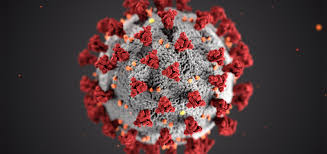
A recent study found that the novel coronavirus appears to have circulated unnoticed in bats for decades. Horseshoe bats are the most plausible origin of the SARS-CoV-2 pathogen, researchers led by Maciej Boni of Pensylvania State University’s Center for Infectious Disease Dynamics.
Daily Current Affairs Quiz 2020
Key-Points
Bats have been the ‘primary reservoirs’ for SARS-CoV-2, which is likely to have diverged from closely related bat viruses called the RaTG13 sarbecovirus, 40-70 years ago.
According to that Chinese study, SARS-CoV-2 is most closely related to RaTG13, which was isolated from a horseshoe bat in Yunnan province in 2013.
Based on the nearly 96% genome sequence identity between SARS-CoV-2 and RaTG13, it was held that an origin in bats is probable for the Covid-19 outbreak.
It is a process by which pieces of deoxyribonucleic acid (DNA) are broken and recombined to produce new combinations of alleles (forms of a gene). This recombination process creates genetic diversity at the level of genes that reflects differences in the DNA sequences of different organisms.
The ability of the spike protein in the virus to bind to Angiotensin-Converting Enzyme 2 (ACE2) human receptors had emerged within bats and is an ancestral trait shared with bat viruses and not one acquired recently via recombination.
The results of the study suggest the presence of a ‘single lineage’ circulating in bats with properties that allowed it to infect human cells.
The study challenged the idea of pangolins serving as an intermediate host where the virus would have acquired its ability to infect human cells thus facilitating the jump into humans.





